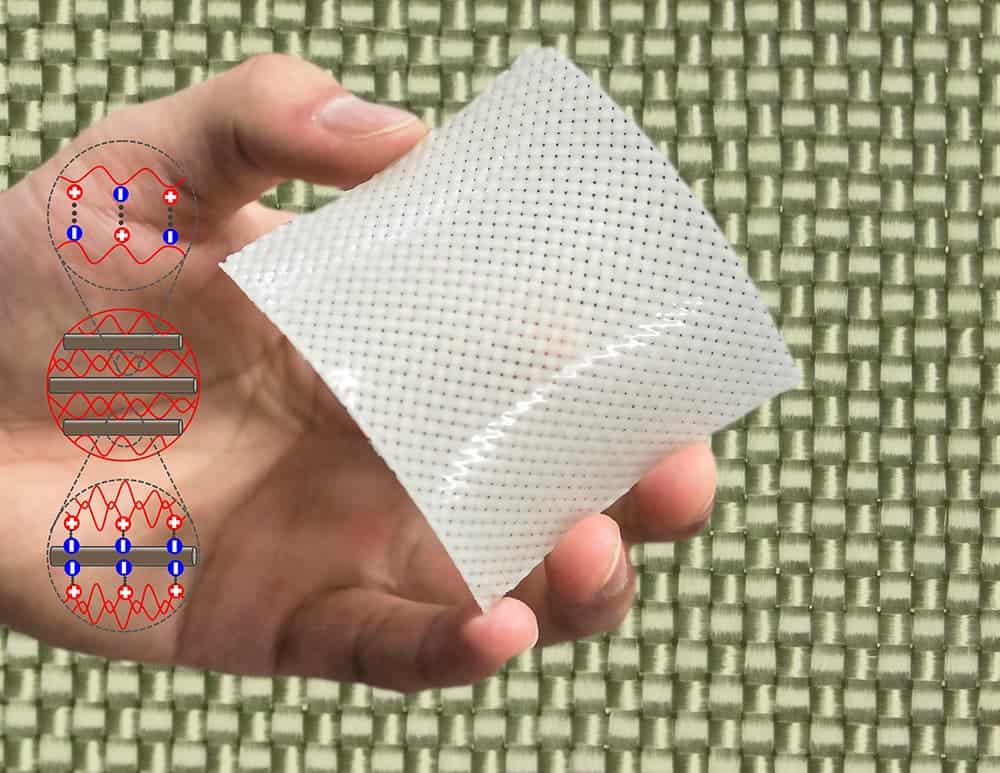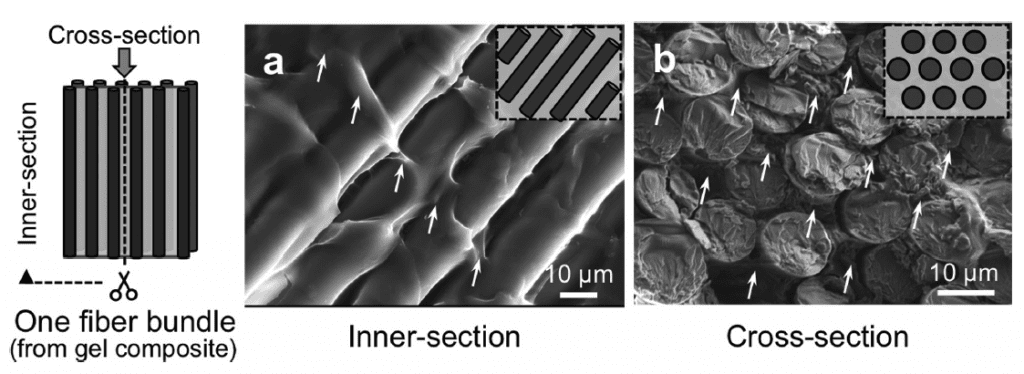
By adding fibers, scientists have turned a soft gel into a material tougher than many metals. Credit: Hokkaido Uni.
Hydrogels are made of a network of polymer chains that are hydrophilic. For this reason, this material can absorb up to 90% of its weight in water making the hydrogel highly flexible, mimicking natural tissue. On the flipside, hydrogels aren’t very strong. However, Japanese researchers from Hokkaido University have found a way to make very strong hydrogels by introducing fibers into their composition without compromising too much flexibility. The fiber-reinforced hydrogels are five times tougher than steels according to tests ran in the lab.
Due to its properties, hydrogel is used for medical purposes in tissue engineering as well as sustained-release of drug delivery system or rectal diagnoses. It also has the potential to become a very useful structural material if only it could be coaxed to be stronger for long-term use.
The Japanese team led by Dr. Jian Ping Gong looked at the problem and decided to go with a time-honored approach: just mix and match with some other material to create a composite material that has all of the desired properties. For instance, mud is mushy but add some straw to it and leave it to bask in the sun for a while and you have some pretty functional solid bricks. It’s how people used to make their homes for thousands of years.
Likewise, the researchers added glass fiber fabric to polyampholyte (PA) hydrogels that contained high levels of water. Though the fibers were no bigger than 10μm in diameter, slightly thinner than the human hair, the resulting composite material proved to be bendable and very strong at the same time.

Scanning Electron Microscopy (SEM) images of the fiber-reinforced hydrogels. The polymer matrix (arrows) filled the interstitial space in the fiber bundles and connected the neighboring fibers. (Huang Y. et al., Advanced Functional Materials, January 16, 2017)
Lab tests show the fiver-reinforced hydrogels are 25 times tougher than glass fiber fabric and 100 times tougher than unaltered hydrogels. That makes it 5 times tougher than carbon steel. The researchers measured the energy required to destroy them when assessing the materials’ strength.
It’s not certain yet but the Japanese researchers think this high toughness is due to an increase in dynamic ionic bonds between the fiber and hydrogels, as well as within the gels themselves.
The manufacturing process is quite simple — you only have to immerse the fabric in PA precursor solutions for polymerization — and should prove scalable.
“The fiber-reinforced hydrogels, with a 40 percent water level, are environmentally friendly,” Gong said in a statement. “The material has multiple potential applications because of its reliability, durability and flexibility. For example, in addition to fashion and manufacturing uses, it could be used as artificial ligaments and tendons, which are subject to strong load-bearing tensions.”
The same process, reported in the journal Advanced Functional Materials, should be able to make other polymers tougher, like rubber.









